Did you know that mizuna lettuce is not only easy to grow but also packed with essential nutrients? This surprising leafy green, also known as Japanese mustard greens, offers a refreshing and tangy flavor that can elevate your salads and dishes to new heights. With its vibrant colors and feathered edges, mizuna lettuce is a versatile ingredient that adds excitement to any culinary creation. Whether you’re a seasoned gardener or a food enthusiast looking to explore new flavors, join me as we dive into the world of mizuna lettuce and discover the joys of growing and enjoying this remarkable leafy green.
Key Takeaways:
- Mizuna lettuce, also known as Japanese mustard greens, is a versatile and flavorful leafy green that can add excitement to your salads and dishes.
- Mizuna lettuce is easy to grow and provides a continuous harvest, making it a great addition to any garden.
- With its fresh, peppery, and tangy flavor, mizuna lettuce can be enjoyed in various culinary creations, including salads, stir-fries, and soups.
- Mizuna lettuce is packed with essential nutrients like vitamins A, C, and K, as well as folate, iron, and minerals.
- Whether you choose to grow mizuna lettuce in raised beds or containers, it is a versatile plant that can adapt to different growing conditions.
How to Grow Mizuna Lettuce
Growing mizuna lettuce is a straightforward process that can be enjoyed by both beginner and experienced gardeners. Mizuna lettuce, a cool-season plant, thrives in most soil types and is known for its cold resistance. This versatile leafy green, belonging to the brassica family along with kale, offers a delightful combination of flavors and is packed with essential nutrients. Let’s explore how you can successfully grow your own mizuna lettuce.
Choosing the Right Location
When selecting a location for your mizuna lettuce, aim for an area that receives at least 4-6 hours of direct sunlight daily. Mizuna lettuce can tolerate partial shade, but full sun exposure is beneficial for optimal growth. If you’re facing extremely hot conditions, consider providing some shade during the hottest parts of the day to prevent wilting.
Preparing the Soil
Mizuna lettuce thrives in well-drained soil rich in organic matter. Prepare the soil by removing any weeds, rocks, or debris. Loosen the soil to a depth of 6-8 inches, incorporating compost or well-rotted manure to improve the soil’s fertility and drainage. A pH level between 6.0-7.0 is ideal for mizuna lettuce.
Sowing the Seeds
Sow mizuna lettuce seeds directly into the prepared soil, approximately 1/4 to 1/2 inch deep. Space the seeds about 6 inches apart to allow room for growth. Mizuna lettuce seeds typically germinate within 4-7 days at temperatures between 45-85 degrees Fahrenheit. Keep the soil consistently moist during germination to promote successful seedling emergence.
Thinning and Watering
Once the seedlings reach a height of approximately 1 inch, thin them out by removing the weaker ones, leaving a spacing of 6 inches between each plant. Thinning promotes better airflow, prevents overcrowding, and allows the remaining seedlings to thrive. Mizuna lettuce requires regular watering to keep the soil moist but not waterlogged. Aim for an inch of water per week, adjusting based on weather conditions.
Harvesting and Maintenance
After 20-40 days of growth, your mizuna lettuce will be ready for harvest. Cut the outer leaves, leaving the center intact for continued growth. This harvesting method, known as “cut-and-come-again,” allows for multiple harvests throughout the growing season. Ensure you harvest regularly to prevent the plants from bolting and going to seed. Keep an eye out for pests and diseases, such as aphids and flea beetles, and take appropriate measures to protect your plants.
| Mizuna Lettuce Nutrition Facts | Quantity per 100g |
|---|---|
| Calories | 16 |
| Protein | 2g |
| Fat | 0.5g |
| Carbohydrates | 3g |
| Fiber | 2g |
| Vitamin A | 87% of the Daily Value (DV) |
| Vitamin C | 52% of the DV |
| Vitamin K | 167% of the DV |
| Folate | 20% of the DV |
| Iron | 10% of the DV |
Mizuna lettuce is not only easy to grow but also a nutritious addition to your diet. With its vibrant flavors and nutritional profile, mizuna lettuce is a fantastic choice for those looking to enhance their culinary creations while reaping the benefits of a healthy and delicious leafy green.
Culinary Uses of Mizuna Lettuce
Mizuna lettuce, with its delicate yet peppery flavor, offers a wide range of culinary possibilities. Whether you prefer it raw, steamed, sautéed, or pickled, mizuna lettuce can add a burst of freshness and unique flavor to your dishes. Here are some exciting ways to incorporate mizuna lettuce into your meals:
1. Mizuna Salad
Create a refreshing and nutritious mizuna salad by combining the tender mizuna leaves with other greens like spring mixes or mustard greens. Toss in some cherry tomatoes, thinly sliced radishes, and a light vinaigrette dressing for a delightful mix of flavors.
2. Mizuna Stir-Fries
Add a vibrant green color and a peppery taste to your stir-fries by including mizuna lettuce. Stir-fry it along with other vegetables and your choice of protein, such as tofu or shrimp, and season with soy sauce, garlic, and ginger for an irresistibly savory dish.
3. Mizuna Soups
Mizuna lettuce can be a delicious addition to soups, providing both flavor and texture. Add mizuna leaves to hot pots, miso soup, or vegetable soups during the last few minutes of cooking, allowing them to wilt slightly while preserving their fresh taste.
4. Mizuna Pizza Topping
Add a touch of sophistication to your homemade pizza by sprinkling fresh mizuna leaves on top. Their tangy and slightly spicy flavor pairs exceptionally well with tomato sauce and cheese, creating a unique twist to a classic favorite.
5. Mizuna Pasta Dishes
Elevate your pasta dishes by tossing in some blanched mizuna leaves for a burst of color and flavor. Sauté garlic and chili flakes in olive oil, then add the cooked pasta, mizuna leaves, and a sprinkle of Parmesan cheese for a simple yet satisfying meal.
Pro Tip: Mizuna lettuce can shrink quickly when cooked, similar to spinach. To retain its texture, add it to your dishes near the end of cooking.
As you can see, mizuna lettuce is a versatile ingredient that can be used in a multitude of ways. Its fresh and peppery taste complements a variety of dishes, from salads and stir-fries to soups and pizzas. Get creative in the kitchen and explore the diverse culinary potential of mizuna lettuce.
Nutritional Benefits of Mizuna Lettuce
If you’re looking for a delicious and nutritious addition to your diet, look no further than mizuna lettuce. This vibrant leafy green is not only a treat for the taste buds but also a powerhouse of essential nutrients.
As a member of the brassica family, mizuna lettuce shares many nutritional benefits with its relatives like kale. It’s rich in vitamins A, C, and K, which are vital for maintaining healthy vision, boosting immunity, and ensuring proper blood clotting.
Mizuna lettuce is also a good source of folate, a B-vitamin that is essential for cell growth and development. Additionally, it contains iron, a mineral that plays a crucial role in oxygen transport throughout the body.
But the goodness doesn’t stop there. Mizuna lettuce is packed with a variety of vital minerals such as calcium, magnesium, manganese, potassium, zinc, and selenium. These minerals contribute to bone health, support nerve function, and help regulate a range of bodily processes.
Benefits of Mizuna Lettuce:
- High in vitamins A, C, and K, which promote healthy vision, immunity, and blood clotting.
- Rich in folate, important for cell growth and development.
- Contains iron, essential for oxygen transport in the body.
- Good source of important minerals like calcium, magnesium, manganese, potassium, zinc, and selenium.
Adding mizuna lettuce to your meals is a fantastic way to boost your nutrient intake and support a well-rounded and nutritious diet.
Tips for Growing Mizuna Lettuce in Containers
If you have limited space but still want to enjoy the delights of growing mizuna lettuce, fear not! This leafy green can be successfully cultivated in containers, bringing fresh and flavorful produce right to your doorstep. Here are some tips to help you grow mizuna lettuce in containers:
- Choose the right container: Select a container with good drainage, such as a pot or a raised bed with drainage holes. A minimum depth of 6 inches is recommended to allow for healthy root growth.
- Prepare the soil: Fill the container with a well-balanced mixture of potting soil and compost. This will provide the necessary nutrients for your mizuna lettuce to thrive.
- Find the perfect spot: Place the container in a sunny location that receives at least 4-6 hours of sunlight each day. If you live in an area with extremely hot climates, consider providing some shade to protect the tender leaves from scorching.
- Maintain moisture: Keep the soil consistently moist by watering regularly. Mizuna lettuce prefers a consistently moist environment, so make sure to check the soil moisture frequently. In hotter climates, it may be necessary to water twice a day to prevent the soil from drying out.
- Enjoy the convenience: One of the great advantages of growing mizuna lettuce in containers is the ease of maintenance. Containers allow for easy monitoring, avoiding soil-borne diseases, and harvesting fresh leaves whenever you desire.
With these tips in mind, you can experience the joy of growing your own mizuna lettuce, even if you have limited gardening space. Enjoy the process and savor the satisfaction of harvesting delicious and nutritious mizuna lettuce right at home.
Mizuna Lettuce in Different Growing Conditions
Mizuna lettuce is a hardy plant that can adapt to various growing conditions, making it a versatile choice for gardeners. Whether you are in a region with early frost or have limited space in your garden, mizuna lettuce can thrive and provide a bountiful harvest.
One of the great advantages of growing mizuna lettuce is its ability to withstand early frost once established. This makes it an excellent option for both spring and fall crops, extending your growing season and ensuring a continuous supply of fresh greens.
Some regions can even grow mizuna lettuce year-round, further maximizing the benefits of this leafy green. Its adaptability to cool to cold temperatures allows it to thrive in various climates, making it a suitable choice for gardeners across different regions.
In terms of sunlight, mizuna lettuce can tolerate light shade, making it a flexible option for gardeners with partially shaded areas in their gardens. This adaptability allows you to grow mizuna lettuce in different parts of your garden, even if they receive varying levels of sunlight throughout the day.
Additionally, mizuna lettuce is often used as an intercropping plant with slower-growing crops. By planting mizuna lettuce alongside other vegetables, you can maximize space in your garden and enjoy the benefits of companion planting.
When it comes to soil, mizuna lettuce grows best in well-drained soil. However, it can still perform well in different soil types, including sandy or clay soils. Its adaptability to different soil conditions makes it accessible to a wide range of gardeners.
Mizuna Lettuce Growing Conditions Summary:
| Condition | Description |
|---|---|
| Frost Tolerance | Mizuna lettuce can withstand early frost once established, extending the growing season. |
| Year-Round Growing | Some regions can grow mizuna lettuce year-round, ensuring a continuous supply of fresh greens. |
| Sunlight | Mizuna lettuce can tolerate light shade, making it suitable for partially shaded areas in the garden. |
| Intercropping | Mizuna lettuce is often used as an intercropping plant, maximizing space in the garden. |
| Soil | Mizuna lettuce grows best in well-drained soil but can perform well in different soil types. |
With its adaptability to different growing conditions, mizuna lettuce is a fantastic choice for gardeners who want to enjoy fresh, homegrown greens throughout the year. Whether you are dealing with frost, limited space, or varying levels of sunlight, mizuna lettuce can thrive and provide a delicious addition to your meals.
Harvesting and Storing Mizuna Lettuce
Harvesting mizuna lettuce is a simple and rewarding process. Whether you’re a beginner or an experienced gardener, the joy of picking your own fresh greens is unmatched. Mizuna greens can be harvested at any stage of growth, but for optimal flavor and texture, it is best to wait until they reach a height of 4-6 inches, typically between 20 and 40 days after germination.
To harvest, simply use a sharp pair of garden scissors or shears to cut the leaves at the base, close to the soil level. It’s important to leave the inner growth undisturbed to allow for further regrowth. Mizuna lettuce is a cut-and-come-again crop, meaning you can harvest it multiple times throughout the growing season. This continuous harvesting method ensures a steady supply of fresh, flavorful greens for your meals.
After harvesting, it’s essential to store your mizuna lettuce properly to maintain its freshness and quality. Start by rinsing the leaves thoroughly to remove any dirt or debris. Next, gently pat the leaves dry with a clean kitchen towel or use a salad spinner to remove excess moisture.
When storing mizuna lettuce, avoid using sealed plastic bags, as they can trap moisture and cause the leaves to decay quickly. Instead, opt for a breathable bag or a salad spinner with a lid. This allows the greens to maintain their crispness while still allowing for some airflow.
Refrigeration is key to preserving the freshness of mizuna lettuce. Place the unwashed leaves in the refrigerator’s crisper drawer or in a container lined with a paper towel to absorb excess moisture. Mizuna lettuce can stay fresh for up to one week when stored properly.
For long-term storage, another option is to pickle your mizuna greens. Pickling not only extends their shelf life but also adds a tangy and slightly sour flavor to the greens. Simply prepare a pickling brine using vinegar, water, sugar, and salt, and place your mizuna leaves in a jar. Pour the brine over the greens, ensuring they are fully submerged. Seal the jar and refrigerate for at least 24 hours before enjoying your pickled mizuna lettuce.
With the right harvesting and storing techniques, you can enjoy the fresh and vibrant flavors of mizuna lettuce for an extended period, enhancing your meals with this versatile leafy green.
| Harvesting Tips | Storing Tips |
|---|---|
|
|
Common Pests and Diseases of Mizuna Lettuce
While growing mizuna lettuce is generally hassle-free, it is important to be aware of the common pests and diseases that can affect this leafy green. By recognizing these issues early on, you can take appropriate measures to protect your plants and ensure a healthy harvest.
Pests of Mizuna Lettuce
Two of the primary pests that may target your mizuna lettuce are flea beetles and aphids.
Flea Beetles: These tiny pests lay their eggs near the stalks of mizuna lettuce plants. The resulting larvae can cause damage by eating holes in the leaves and stems. To prevent flea beetles from laying eggs on your plants, you can use row covers as a physical barrier.
Aphids: These small, green insects feed on the sap of mizuna lettuce plants and can rapidly multiply if left unchecked. To control aphid populations, you can use insecticidal soap or pyrethrum, which are effective organic solutions.
Diseases of Mizuna Lettuce
One common disease that can affect mizuna lettuce seedlings when sown indoors is damping-off.
Damping-off: This fungal disease typically attacks the stems of seedlings, causing them to become weak and damp. Proper ventilation and the use of sulfur powder can help prevent the spread of damping-off in indoor settings.
By staying vigilant and taking prompt action against pests and diseases, you can ensure the health and productivity of your mizuna lettuce plants.
| Pest/Disease | Description | Prevention/Control |
|---|---|---|
| Flea Beetles | Tiny beetles that lay eggs near the stalks, leading to larvae that eat holes in the leaves and stems. | Use row covers as a physical barrier to prevent flea beetles from laying eggs on plants. |
| Aphids | Small, green insects that feed on the sap of mizuna lettuce, causing damage and rapid reproduction. | Control aphid populations with organic solutions like insecticidal soap or pyrethrum. |
| Damping-off | Fungal disease that attacks seedlings’ stems, causing weakness and dampness. | Prevent spread with proper ventilation and the use of sulfur powder in indoor settings. |
Mizuna Lettuce Compared to Other Greens
Mizuna lettuce and arugula are two distinct greens that offer unique flavors and culinary uses. Understanding the differences between them can help you choose the right green for your dishes.
Mizuna Lettuce
Mizuna lettuce is characterized by its peppery taste with a subtle mustard aftertaste. It belongs to the brassica family, which includes kale and cabbage. Mizuna lettuce is versatile and can be used in salads, sautés, stir-fries, and more, adding a distinct flavor and texture. Its feathered edges and vibrant stems make it visually appealing in any dish.
Arugula
Arugula, on the other hand, has a more pronounced nutty and peppery flavor. It is often described as having a slightly bitter taste. Arugula is commonly used in salads, pizzas, and pasta dishes to enhance the overall flavor profile. Its spiciness can add a delightful kick to various recipes.
Both mizuna lettuce and arugula can be enjoyed raw or cooked, depending on personal preferences. They offer different taste profiles, allowing you to experiment and create unique culinary experiences.
Mizuna Lettuce Vs. Arugula: A Comparison
| Mizuna Lettuce | Arugula |
|---|---|
| Peppery taste with a mustard aftertaste | Nutty and peppery flavor |
| Belongs to the brassica family | Distinct from the brassica family |
| Versatile in salads, sautés, stir-fries, and more | Commonly used in salads, pizzas, and pasta dishes |
As you can see, mizuna lettuce and arugula offer unique taste profiles and culinary applications. While mizuna lettuce belongs to the brassica family, arugula offers a different flavor experience. Incorporating both greens into your recipes can expand your culinary possibilities and add depth to your dishes.
Experiment with mizuna lettuce and arugula in your kitchen to discover new flavors and combinations. Their distinctive tastes will bring excitement to your salads, stir-fries, and other creative dishes. Enjoy the culinary adventure that these flavorful greens have to offer.
Mizuna Lettuce: A Versatile Ingredient
Mizuna lettuce is not just your ordinary leafy green. Its versatility in the kitchen makes it a fantastic ingredient that can take your dishes to new heights. Whether it’s adding a peppery crunch to salads or infusing stir-fries with a mild spiciness, mizuna lettuce offers a unique and delightful flavor profile. Let’s explore the various ways you can use mizuna lettuce to elevate your culinary creations.
1. Mizuna Salad
One of the simplest and most refreshing ways to enjoy mizuna lettuce is in a salad. Its crisp texture and zesty taste make it a perfect addition to any greens mix. Combine mizuna with other salad staples like lettuce, spinach, or arugula for a delightful medley of flavors and textures. Add some cherry tomatoes, radishes, and a tangy vinaigrette, and you have a vibrant and nutritious salad to satisfy your taste buds.
2. Mizuna in Stir-Fries
When it comes to stir-fries, mizuna lettuce can bring a unique twist to your favorite recipes. Its mild spiciness adds a subtle kick that pairs well with other ingredients like bell peppers, mushrooms, and tofu. Simply toss the mizuna in towards the end of cooking to wilt it slightly and preserve its vibrant color and crunch. The result is a delicious and visually appealing stir-fry that will impress your family and friends.
3. Mizuna in Soups
Mizuna lettuce can also be a delightful addition to soups and stews. Its peppery flavor can liven up a comforting bowl of chicken noodle soup or add a refreshing twist to a classic minestrone. Just like with stir-fries, add the mizuna towards the end of cooking to retain its texture and taste. Serve hot, and let the mizuna leaves infuse your soup with their delightful flavor.
4. Mizuna on Pizza
If you’re feeling adventurous, why not try adding mizuna lettuce to your homemade pizza? Its unique flavor and texture can bring a whole new dimension to everyone’s favorite Italian dish. Whether you’re going for a classic Margherita or a creative combination of toppings, mizuna adds a fresh and peppery element that complements the other ingredients perfectly. Simply sprinkle some washed and dried mizuna leaves on your pizza before baking, and prepare to be amazed.
5. Pickled Mizuna Side Dish
If you’re looking for an interesting and tangy side dish, pickled mizuna lettuce is a fantastic option. The pickling process infuses the leaves with a delightful tartness that pairs well with a variety of meals. Whether you’re serving it alongside grilled meats, sushi, or even as a topping for sandwiches, pickled mizuna adds a burst of flavor and a pop of color to your plate.
Mizuna lettuce is truly a culinary gem that deserves a place in your kitchen. Its versatility allows you to experiment with various flavors and create unique dishes that will impress your taste buds. So, go ahead and explore the world of mizuna lettuce recipes, and let your creativity run wild!
| Benefits of Using Mizuna Lettuce: |
|---|
| Enhances salads with its peppery flavor and crunchy texture. |
| Adds a mild spiciness to stir-fries and soups. |
| Brings a fresh twist to homemade pizzas. |
| Imparts a tangy burst of flavor when pickled. |
Where to Buy Mizuna Lettuce
If you’re excited to start growing your own mizuna lettuce, getting your hands on seeds or seedlings is the first step. Fortunately, there are several convenient options available to you.
- Local Nurseries: Visit your local nurseries and gardening centers. They often carry a variety of mizuna lettuce seeds and seedlings, especially during the growing season. The staff can also provide valuable advice on growing and caring for your mizuna lettuce.
- Farmers’ Markets: Check out your nearby farmers’ markets. Local growers often sell mizuna lettuce seeds and seedlings, allowing you to support regional agriculture while also finding the perfect addition to your garden.
- Online Retailers and Seed Companies: Explore online retailers and seed companies for a wide selection of mizuna lettuce seeds. You can conveniently browse through different varieties, compare prices, and read customer reviews. Make sure to choose a reputable source that offers high-quality seeds suitable for your specific growing conditions.
With the availability of mizuna lettuce seeds and seedlings from various sources, it’s never been easier to start growing this flavorful green in your own garden.
| Retailer | Website |
|---|---|
| Local Nurseries | www.localnurseries.com |
| Farmers’ Markets | www.farmersmarkets.com |
| Online Retailers and Seed Companies | www.seedcompanies.com |
Conclusion
Mizuna lettuce, with its ease of growing, culinary versatility, and nutritional benefits, is a must-have addition to your garden and kitchen. Whether you have a raised bed or containers, you can successfully grow this vibrant leafy green. Its peppery flavor adds a delightful twist to salads, stir-fries, and other dishes. With its high vitamin and mineral content, mizuna lettuce can contribute to a well-rounded and nutritious diet.
Experiment with different recipes and cooking methods to fully enjoy the unique taste and texture of mizuna lettuce. Whether you’re pickling it, adding it to pasta dishes, or simply eating it fresh, you’ll elevate your meals to new levels of deliciousness. Mizuna lettuce’s feathery edges and vibrant stems also make it visually appealing, adding a touch of color to your plate.
So, why not start growing mizuna lettuce today? With its numerous benefits and culinary possibilities, it’s a rewarding addition to any garden. Embrace the flavors and health benefits of mizuna lettuce, and unlock a world of culinary creativity right in your own backyard.

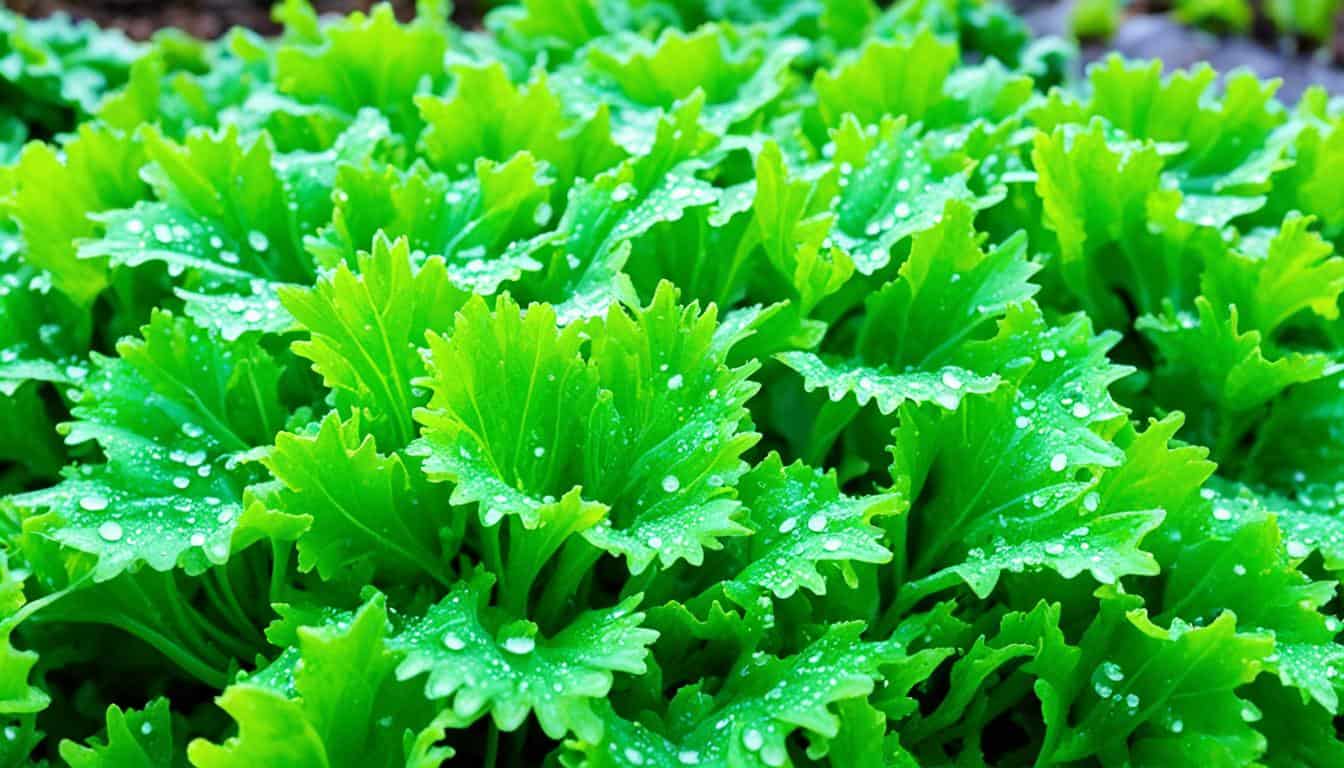
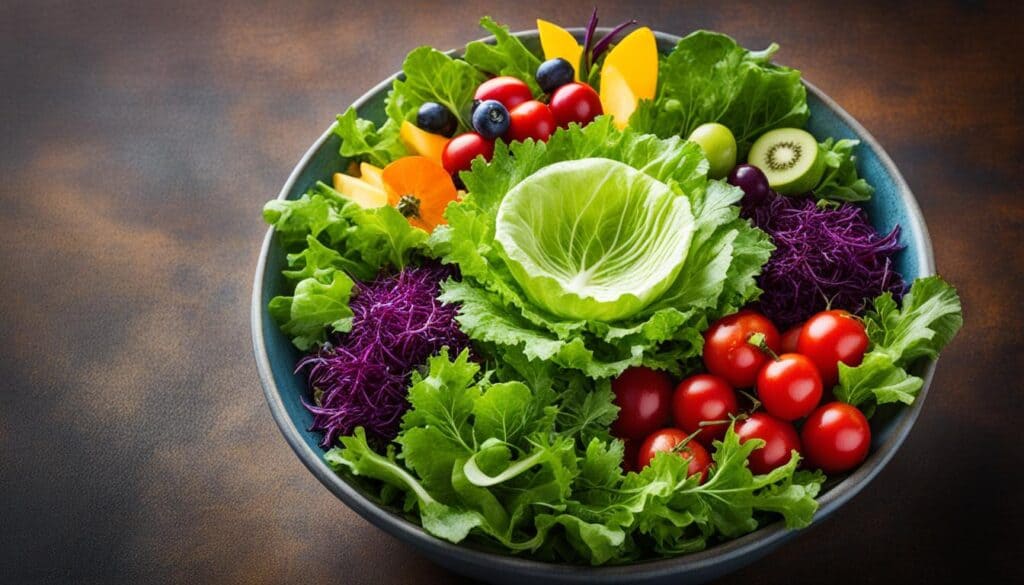
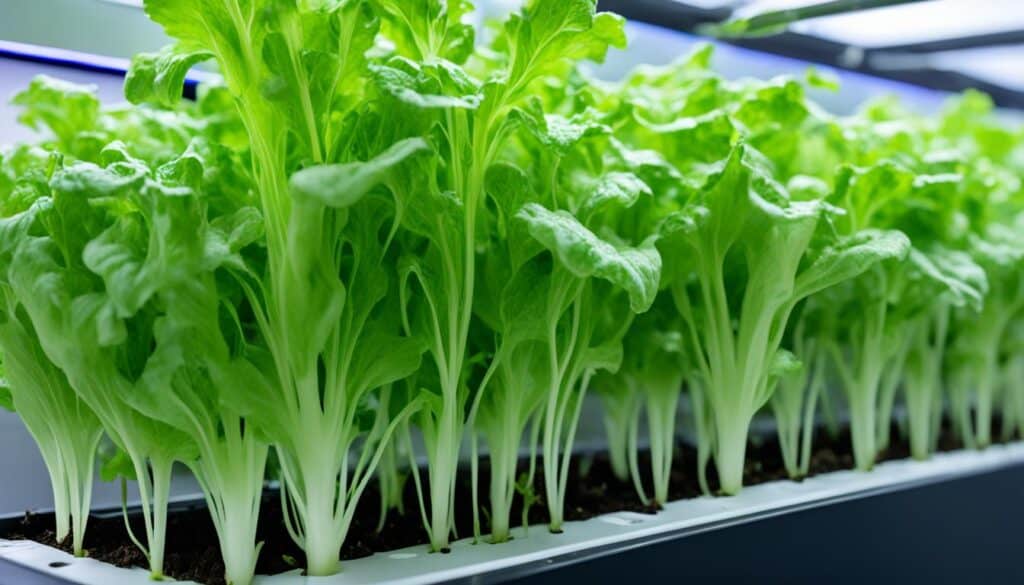
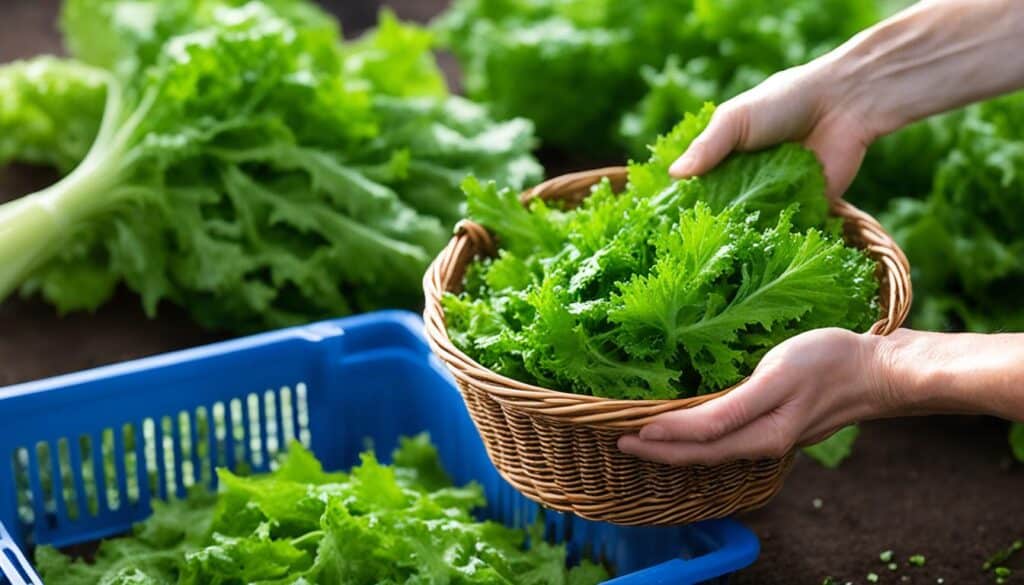
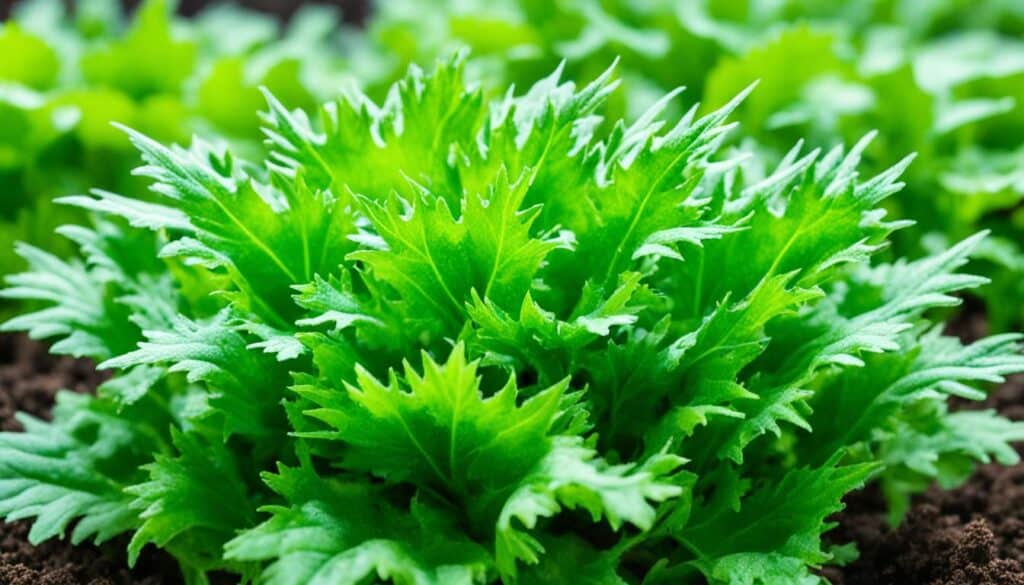
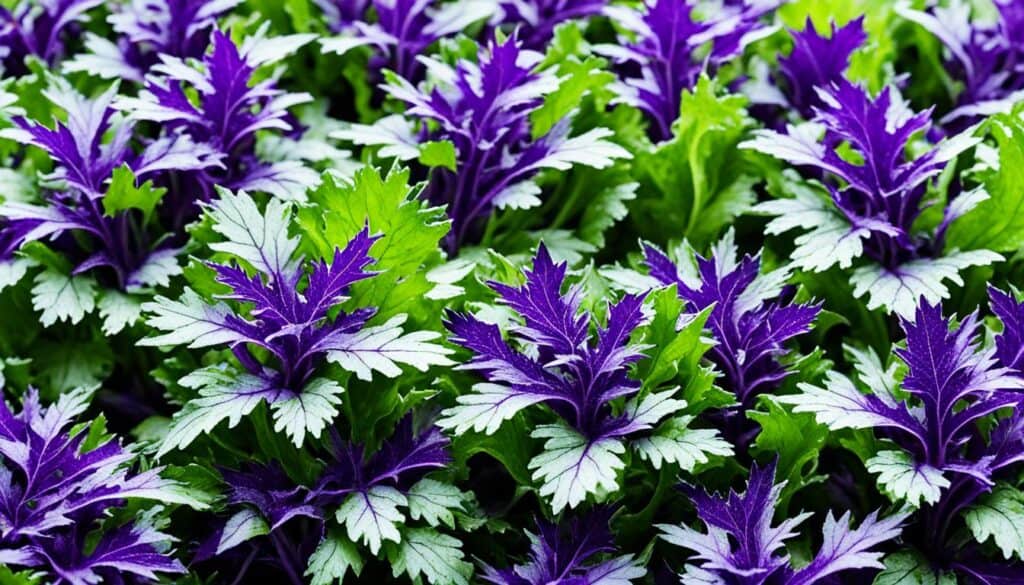

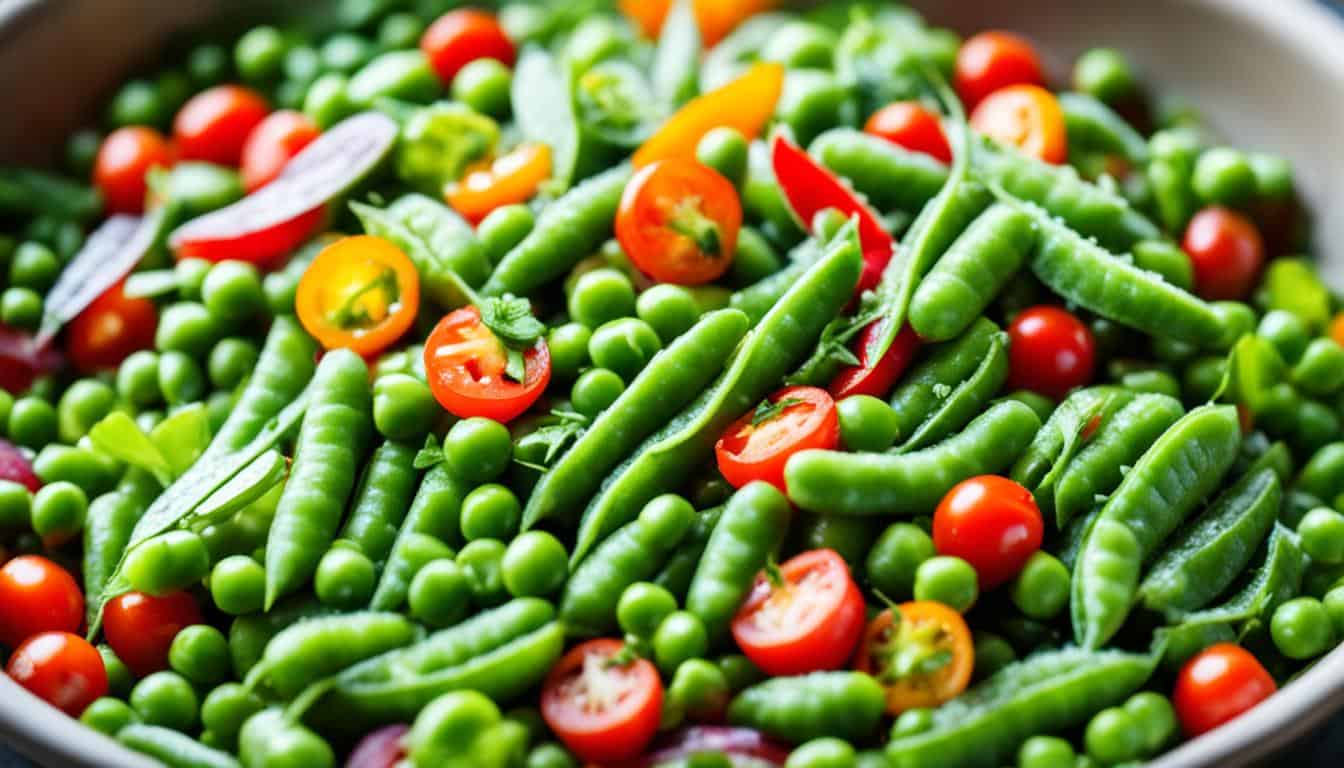
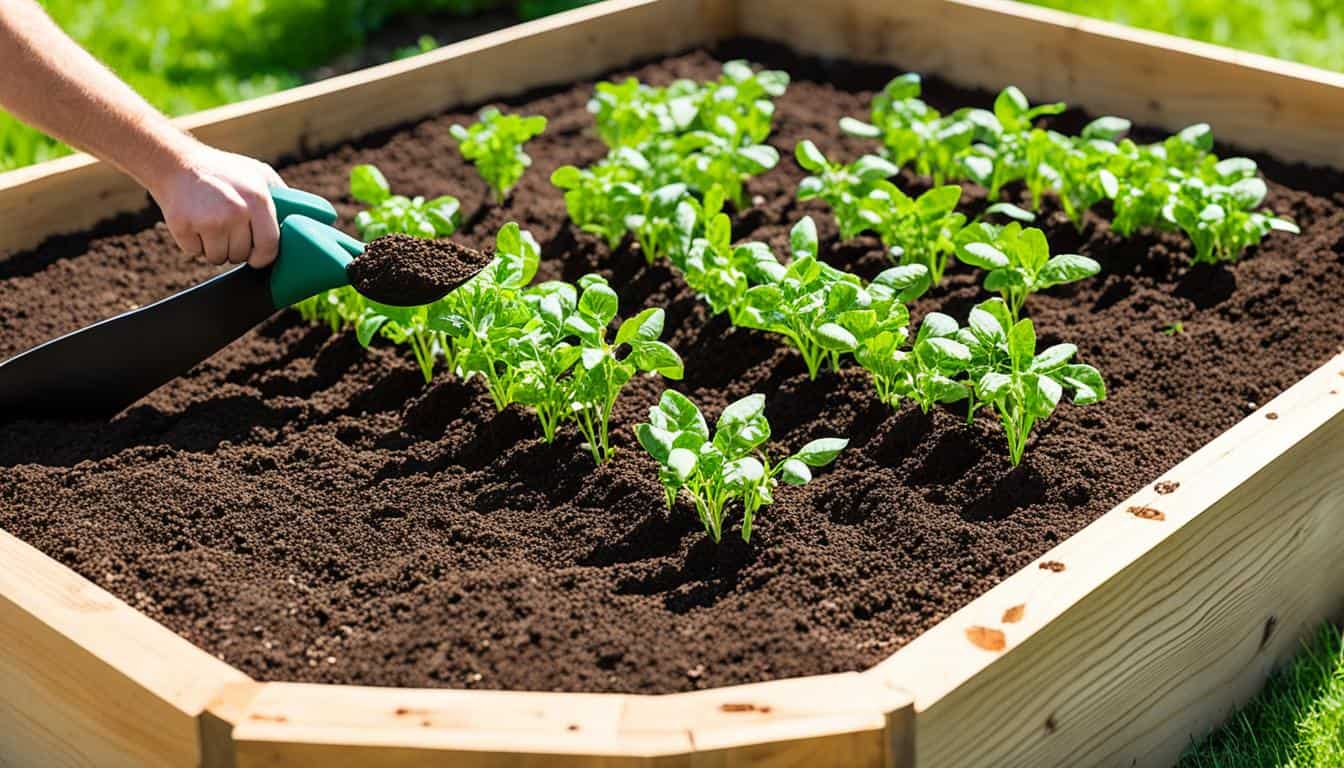
Leave a Reply